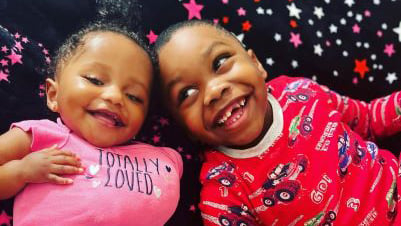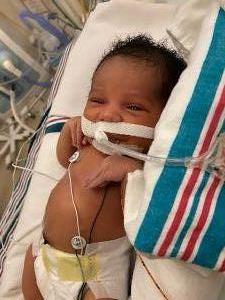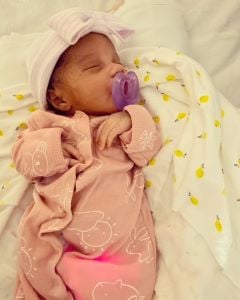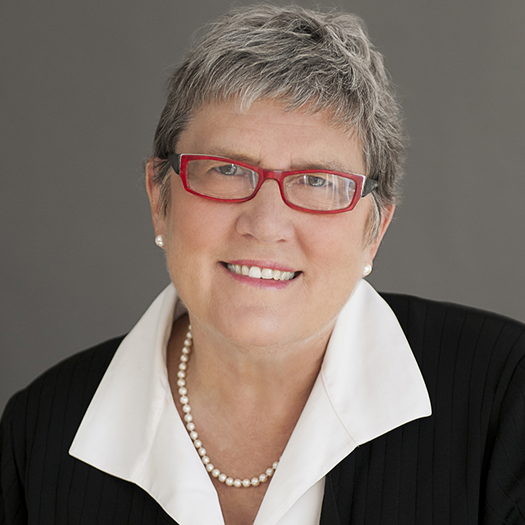
Justice's Story

Justice was born on August 25, 2020, with fractures throughout her body. She was rushed to Children’s National Hospital, where X-rays revealed fractures in her ribs, arms, toes and fingers. She also had a hole in her heart and required assistance breathing. Though prenatal tests revealed abnormal growth, it was not until after Justice was born that doctors could conduct more definitive testing to reveal Justice had a rare bone disease, osteogenesis imperfecta (OI). Between 25,000 to 50,000 people in the U.S. are living with OI, also known as brittle bone disease. Children born with OI have soft bones that break easily, and Justice had a severe case. Justice’s mother, Monique, described seeing her newborn daughter during her first few days as, “gut-wrenching.”
“Her little body was curled up in a ball. She could not stretch out because of her fractures. Every day was a struggle.” But Monique said when she first met Laura Tosi, M.D., orthopaedic surgeon and director of the Bone Health Program, she knew Justice was in the right place.
“She walked in and it was clear: Dr. Tosi was the expert we needed for Justice,” Monique said.
Treating Osteogenesis Imperfecta with Bisphosphonates
When Dr. Tosi began seeing Justice, she had her start bisphosphonate infusions to help strengthen her bones and prevent new fractures. Access to bisphosphonates can help children have better long-term outcomes and function more independently as adults, Dr. Tosi said.
“When I first started practicing over 30 years ago, all we could do was cast or splint kids with severe disease once they fractured. It would happen over and over, and it was heartbreaking,” Dr. Tosi said. But today, innovations in treatment offer options which substantially reduce fractures.
“While there is still no cure for OI, we have found that when we give bisphosphonates to patients with moderate to severe symptoms, it can significantly improve their quality of life.”

The Bone Health Program: A First-of-its-Kind Care Experience
The Bone Health Program, which helps children with rare and inherited bone conditions or children with bone damage from illness or poor nutrition, was one of the first-of-its-kind when Dr. Tosi pioneered it 20 years ago. Today, a multidisciplinary team including endocrinology, orthopaedic surgery and a dedicated nurse practitioner focuses on optimizing every child’s bone health and reducing the risk of future fractures. One part of the program, the bisphosphonate infusion program, treats children with over 30 conditions, including muscular dystrophy.
“We are thrilled with how we have profoundly improved our patients’ comfort,” Dr. Tosi said. “Response to bisphosphonates is variable, but with treatment, patients can live lives that were not possible before. They can go to school, work in jobs and be more independent.”
Independence with Osteogenesis Imperfecta
Monique said an independent life is exactly what she hopes for Justice, now 2 years old, to have someday.
“She is an intellectually normal kid and I want her to do things like a normal kid, so I am always encouraging her by telling her the things she can do.” Justice has suffered six fractures in the last two years and will require surgeries over her lifetime to straighten and reinforce her bones with rods. Through these challenges, Monique said she wants to teach Justice to focus on her strengths.
“She is a superhero. Justice is showing the world what a child with OI can do.” Monique now advocates for more research and expertise for rare bone diseases like O
“Dr. Tosi’s expertise and the Bone Health Program are rare, prized possessions that are sadly not available everywhere,” she said. “Children are going undiagnosed or not getting treatment for OI. More research and access are needed.”

Advocating for Access and Quality Care for Rare Bone Disease
In addition to treating her pediatric patients, Dr. Tosi advocates for access to healthcare for adults with childhood onset conditions as they move into adulthood. She contributes to research studies related to access and quality care for adults and is hosting a conference to raise awareness about the severe gaps in care for these patients.
“As the life expectancy of individuals with rare disorders increases, we need more adult providers who understand their unique care needs,” she said. Access to experts is what Monique hopes for, for other parents of children with rare bone diseases.
“I am so thankful we are close to Children’s National and could meet Dr Tosi. I took the knowledge she could give me about OI and made it my own,” Monique said. “There is nobody else I would trust my baby’s bones with but Dr. Tosi.”



